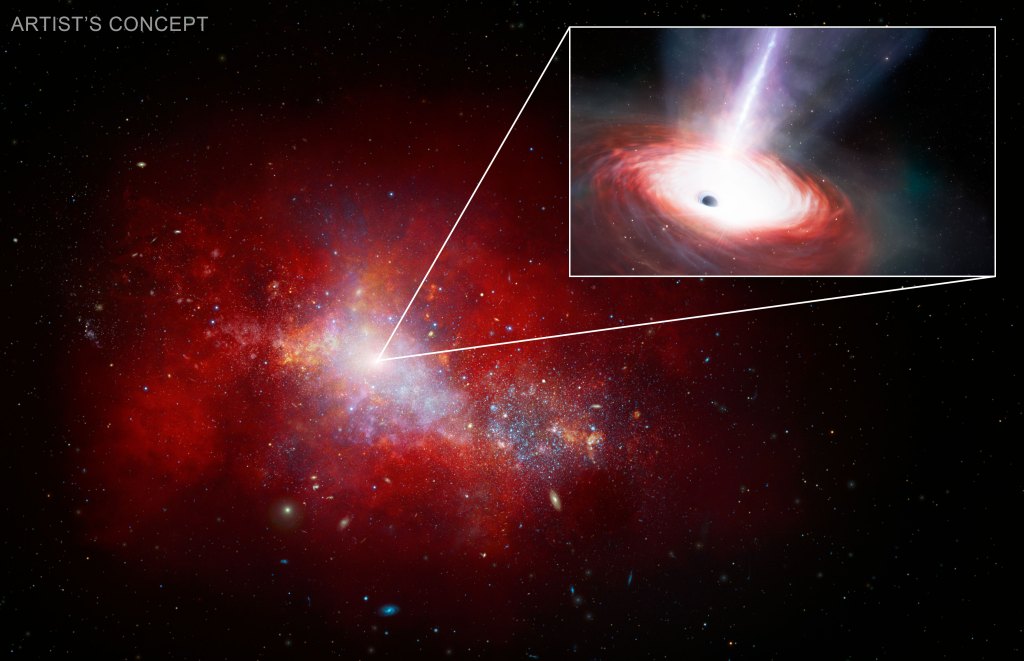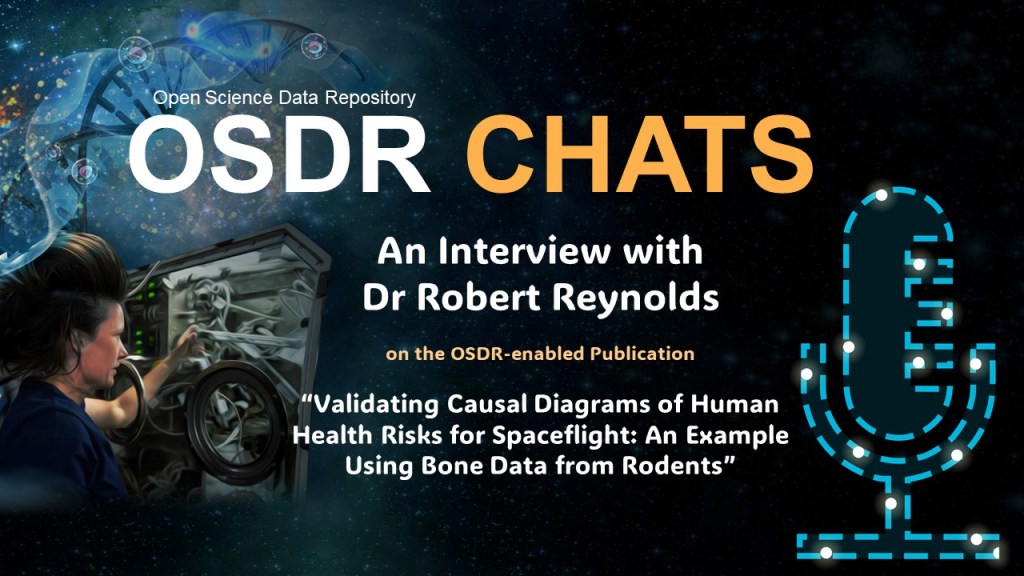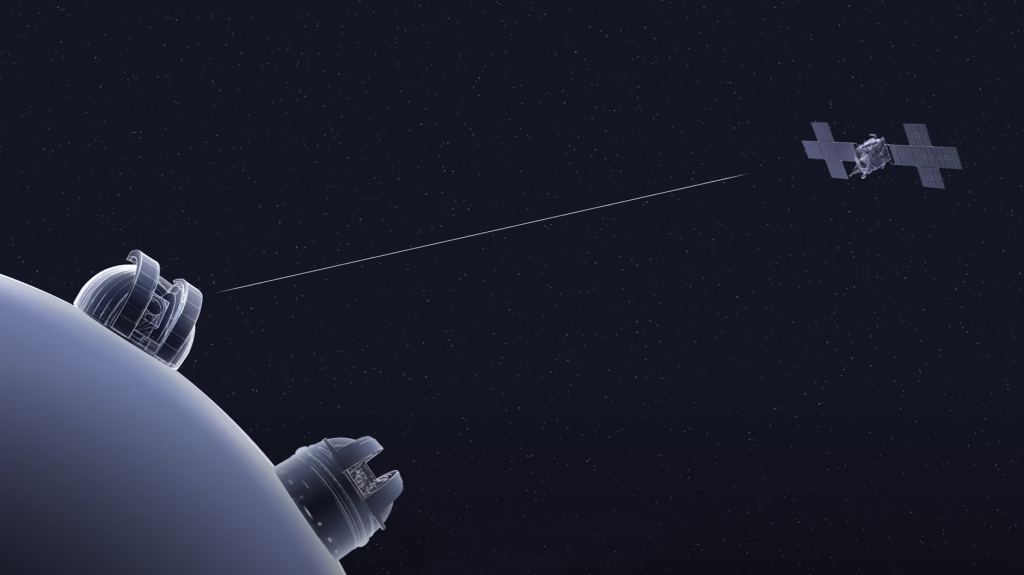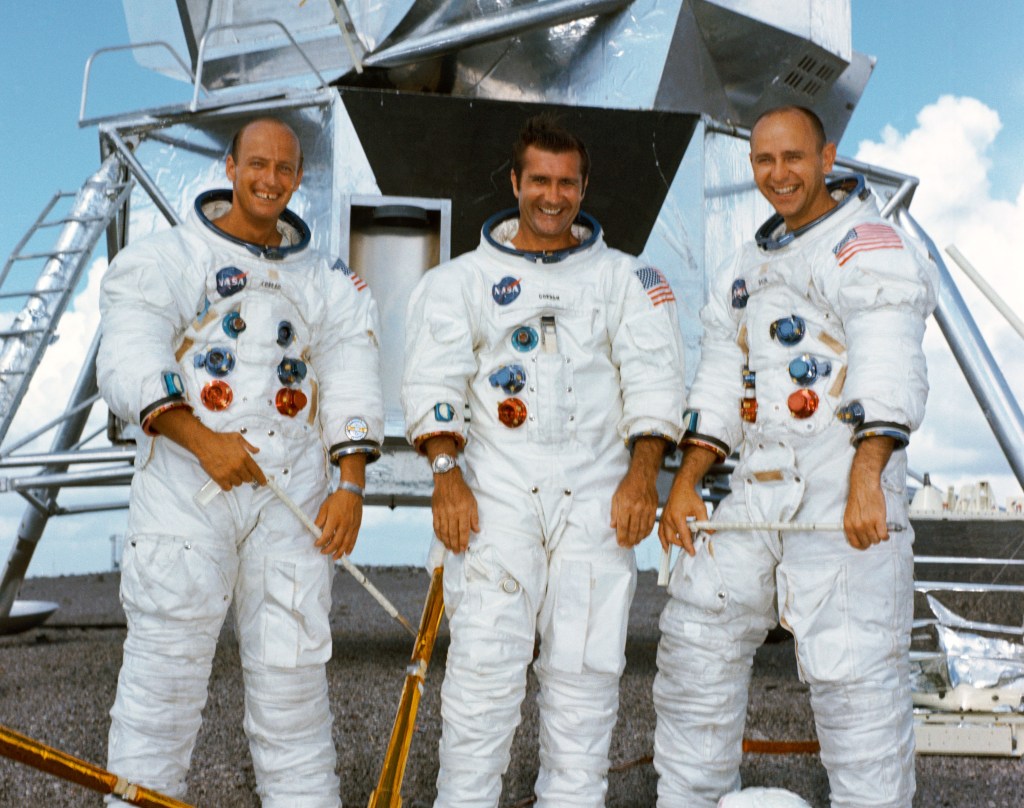NASA’s Curious Universe
Episode 1: “Let’s Go Planet-Hunting!”
Release Date: Monday, July 12
Introducing NASA’s Curious Universe
Our universe is a wild and wonderful place. Join NASA astronauts, scientists, and engineers on a new adventure each week — all you need is your curiosity. Visit our space laboratory, meet the slow-moving crawlers that transport rockets to the launch pad, and dive into faraway galaxies where black holes form. First-time space explorers welcome.
About the Episode
What do we know about the planets outside our solar system? NASA planet hunters Jessie Christiansen and Knicole Colon take us beyond…into the exciting world of exoplanets.
Subscribe
Jessie Christiansen: One of the really fun things about hunting for exoplanets is all the surprises.
[Song: Lighthearted Instrumental by Oliver Dipre]
Jessie Christiansen: So before we found any worlds around other stars, we only knew our solar system. So when we came up with ideas of what other solar systems would look like, they very closely resembled ours. All of our theoretical models for how planets form were designed to recreate the solar system. If your model created something completely different, then you threw it away, because it didn’t create the solar system and we knew the solar system existed.
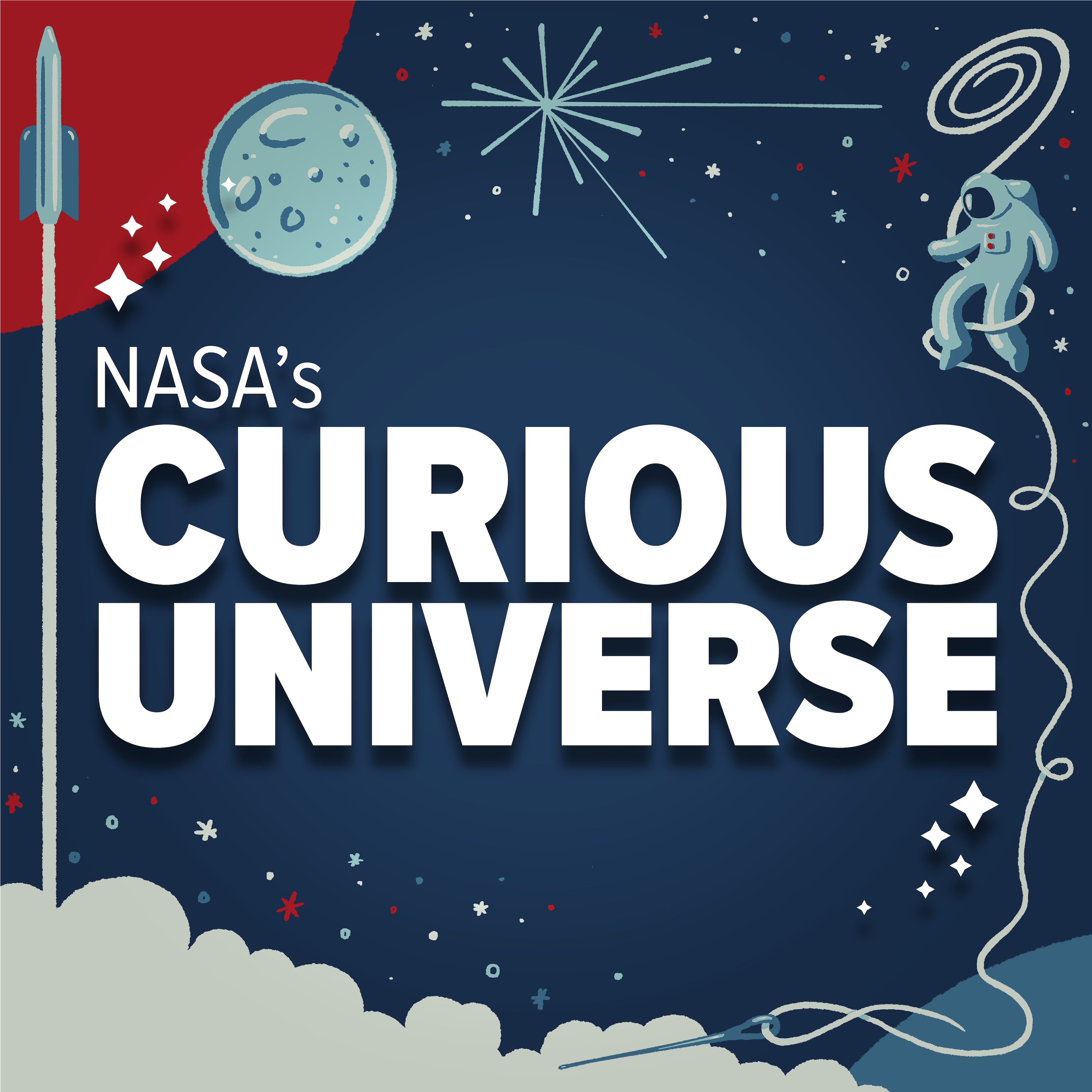
Jessie Christiansen: But when we went out there, we have found anything but. We have found all of these other configurations of planets: big planets right next to their star, chains of small planets all packed really closely together, systems where they’re all misaligned with each other. So it’s been really, really exciting to just kind of see how much more imaginative nature is than we are.
Jessie Christiansen:We think almost every star in the galaxy has at least one planet around it. Which is incredible, because there are 100 billion stars in our galaxy. Just imagine how many worlds that is out there and how much potential that is.
[Theme Song: Curiosity by SYSTEM Sounds]
PADI BOYD: This is NASA’s Curious Universe. Our universe is a wild and wonderful place. I’m Padi Boyd, and in this podcast, NASA is your tour guide!
HOST PADI BOYD: Today, we’re taking you outside our solar system and into the planets that lie beyond. Exoplanets! There are 8 planets in our solar system – Mercury, Venus, Earth, Mars, Jupiter, Saturn, Uranus and Neptune.
HOST PADI BOYD:But in the last few decades, scientists have discovered thousands of planets outsideour solar system. We call them exoplanets. And evidence suggests that there might be hundreds of millions of them in the Milky Way. So far, planet hunters have discovered and named over 4000 worlds within our galaxy.
HOST PADI BOYD: When I’m not hosting this podcast, this is what I study the most – exoplanets and stellar astrophysics! It’s amazing to get to explore these faraway planets.
HOST PADI BOYD: Just a generation ago we didn’t even know if there were planets around other stars, and now we know that exoplanets are everywhere. And the types of exoplanets that we find are dizzying and we can learn a little bit more about the Earth and our solar system by studying the variety of other planets out there and comparing them to our own.
[Song: Detective Puppy Instrumental by Jean-Phillipe Ichard]
HOST PADI BOYD:And the planets we’re finding… are reallyfar away.
Jessie Christiansen: Space is really big. And I think when I get to tell people that we found new planets, they’re always disappointed by the answer of how far away they are.
HOST PADI BOYD: This is Jessie Christiansen, an astrophysicist with the California Institute of Technology.
Jessie Christiansen: On average the exoplanets we’ve found are hundreds or thousands of lightyears away. The problem is a lightyear is really, really big, much farther than we can ever imagine traveling.
HOST PADI BOYD: It’s hard to imagine how far away that is. Even with the most powerful telescopes, only a handful of exoplanets, around 20, have been imaged directly, and even those we see only as dim points of light!
HOST PADI BOYD: ..So how do we even know all those others are out there?
Jessie Christansen: One of the ways we find planets is called the transit method. Now that relies on the fact that some planets are lined up just right, so that from our point of view, as they’re orbiting their star, they pass in front of the star, they eclipse their star and block some of the light. Now from our distance, we can’t actually see that eclipse, but what we can do is measure the brightness of the star over and over again, and wait for it to dim just a little bit and then go back up. So it’s these tiny little dimmings in the brightness of stars that we’re looking for in these data.
HOST PADI BOYD:Exoplanet research is still relatively young – the first one was officially discovered in 1992. But for millennia, humans have looked to the skies and wondered what else is out there.
[Song: Little Treasures Instrumental by Lucas Dorier]
HOST PADI BOYD: Ancient philosophers pondered the existence of other worlds…but we are the first generation that can start to answer some of these questions with data.
Knicole Colon: When I work at NASA, I specifically work on several different space missions, making sure that they’re providing and taking the best data that they can for everybody to investigate and explore.
HOST PADI BOYD: This is Knicole Colon, a research astrophysicist. Her team also uses the transit method to track down exoplanets transiting their stars. But sometimes, stars have more than one planet orbiting around them, which can make things a bit tricky…
Knicole Colon: A lot of stars have more than one planet. That’s what we would think as we know from our own solar system. That means that we get a lot of overlapping signals when we’re looking to study the individual planets.
HOST PADI BOYD:Scientists take those overlapping signals and carefully untangle them to reveal multiple worlds. One of Knicole’s specialties is using that data to determine the compositions of those far-flung planets.
Knicole Colon: We’ve also been able to study atmospheres of exoplanets. We have been finding water vapor in a lot of their atmospheres which is expected and exciting because water is everywhere. But we’re starting to find other things like helium vapor and different molecules that was a little bit of a surprise and not originally predicted until we started looking more at the chemistry of the atmosphere and what’s really going on.
HOST PADI BOYD: In fact, we’ve already begun exploring what some exoplanets are made of.
Knicole Colon: Luckily, when we can observe, for example, a planet that transits or passes in front of its star, if that planet has an atmosphere, we can actually see what starlight gets blocked or, like, filtered out by that atmosphere. By seeing what’s missing, we can say, ‘Oh, you know, that planet has water in its atmosphere, and that water is blocking starlight from reaching our telescope.’ In the future, we’ll be able to look for additional molecules like methane and carbon dioxide as well.
HOST PADI BOYD:With thousands of known exoplanets out there and more coming all the time, it’s important to keep track of them all. Jessie works at the NASA Exoplanet Archive, which organizes and maintains information about the properties of known exoplanets.
[Song: Pastoral Skies Instrumental by Jeremy Nicholas Birchall]
Jessie Christiansen: So the ancient Greeks when they were naming our planets, they went for the Gods and you know, the big movers and shakers of the Greek philosophical world. Nowadays, we do it much more boringly, unfortunately. We have found over 4000 exoplanets so far and they’re almost all named in a very particular way. We take the name of the star that the planet is orbiting, and the name of the star is usually pretty boring itself, like HD 189733. Then the first planet in the system, we attach a little b to the name, so HD 189733 b. The second planet in that system is HD 189733 c. The third planet in the system? I’m sure you see the pattern, HD 189733 d. So they’re all terrible, terrible names. I’m so sorry, on behalf of astronomers everywhere that we give planets such boring names.
HOST PADI BOYD: One of the benefits of gathering all of this information in one place is that scientists can find new and engaging ways to explore it.
[PLAY SONIFICATION: The First 4000 Exoplanets – Animation and Sonification (Full Sky Version) by SYSTEM Sounds]
HOST PADI BOYD: What you’re hearing now isn’t just a pretty song – it’s data… that captures the discovery of exoplanets! This is a data sonification, where planetary information has been translated into sound.
HOST PADI BOYD: Here, each note represents a newly discovered exoplanet. The tone of each note reflects the planet’s orbital period, with longer orbits reflected by lower tones.
HOST PADI BOYD: The music’s increasing complexity reflects the rapidly changing pace of exoplanet discovery between 1992 and 2019.
HOST PADI BOYD: As you can hear, the discoveries came very slowly at first. Then, there’s a great rush of music reflecting the avalanche of discoveries made by NASA’s Kepler mission.
HOST PADI BOYD:This was a huge leap in our catalog! Even today, Kepler’s discoveries constitute more than half of all the exoplanets we know of.
Knicole Colon:I have actually contributed to the discovery of several exoplanets.
[Song: Sun Age Underscore by Richard Anthony D Pike & Thierry Laurent Kronental]
Knicole Colon: I don’t know the number offhand. I wish I did. I should, I should look into that.
HOST PADI BOYD: Again, this is astrophysicist Knicole Colon…
Knicole Colon: I have helped discover new exoplanets and of all kinds, ranging from small, rocky exoplanets that are about the size of Earth to these super giant planets that are like Jupiter. So it’s pretty incredible, being able to discover new planets. I used to remember a time when I could tell you something about every single exoplanet that we know. Now with 4000, I’m like, ‘Oh, wait, which one is that again?’ So things have been changing. But for the better.
[Song: Charming Smile Instrumental by David Jones & Richard Kent]
Knicole Colon: I do have a lot of favorites. There is one that stands out in terms of what my favorite exoplanet is. And it is actually one I helped discover, so that’s partly why it’s one of my favorites. But it’s a planet called KELT-11b. KELT was a survey that discovered it. First of all, it orbits around its star in less than five days. So it’s very close to its star, compared to the Earth orbiting around the Sun every 365 days.
Knicole Colon: But it’s also larger than Jupiter is. So it’s a very giant planet. But then its mass is so low, that when you look at it all together, this planet has a density that is basically the same as styrofoam.
[Cracking sounds start]
Knicole Colon: And so if you imagine how, you know, fluffy and light styrofoam is right, you could just throw it around like it’s nothing. We’d probably just float right off or crush the whole thing. I mean, one of the two.
Knicole Colon: So that intrigued me so much that I actually have worked on projects to study the atmosphere of the planet to find out more. I’ve used NASA’s Hubble telescope to search for water vapor in the planet’s atmosphere, because that can tell us a little bit about where or how the planet formed by knowing how much water it contains. What we found was that the amount of water in its atmosphere is so small that it actually cannot be explained by current theories of planet formation. I’m hoping one day to use future telescopes as well to just really shed some light on okay, how does such a puffy planet exist?
HOST PADI BOYD: A lot of the exoplanets we’re discovering seem sort of wacky by Earthling standards, like Knicole’s styrofoam planet. Can you imagine trying to walk around on a planet you might crush?
HOST PADI BOYD: But every once in a while the data lines up in such a way that we think a planet might fall into the “habitable zone.” This is a range of distances from a star where a planet’s surface mightbe able to contain liquid water on its surface… a requirement for life as we know it on Earth.
HOST PADI BOYD: Astrophysicist Jessie Christiansen has paid special attention to one particular planet that might just be in a habitable zone.
[Song: Koshi Journey Solo by Jan Pham Huu Tri]
Jessie Christiansen: The exoplanet I would most want to visit is Kepler-452b. So this is the one planet that Kepler found, which might be a rocky planet in the habitable zone, meaning it’s the right temperature for liquid water of a star like the Sun. The problem is the data are just a little bit noisy, and we can’t tell from the data we have whether it’s real or not. What I really want to do is just go there and look and be like, does this planet exist? Answering that question would be the top of my mind.
Jessie Christiansen: We do know its size, it’s a little bit bigger than the Earth, it’s 1.5 to 1.6 times the radius of the Earth. So if it’s real, and you could step out on its surface, it likely has a quite high surface gravity. When we walk here on Earth, we feel the Earth pulled down on us and we feel that weight. Now I’m sure you’ve seen images or videos from the Moon of the astronauts like kind of bounding on the Moon, because the gravity on the Moon is much lower, so you actually just feel lighter, and you can move much more easily. On Kepler-452b, the gravity would be higher, because the planet is much bigger, and therefore has much more rock underneath your feet pulling on you. So it might be very difficult to walk, you might feel like walking through quicksand or something.
HOST PADI BOYD: In 2017, NASA announced the discovery of 7 rocky, Earth-sized planets in the habitable zone of a single star called TRAPPIST-1. All 7 planets in the TRAPPIST system have the potential for supporting water on their surface. But with a much smaller star and an entirely different planetary system, even these exoplanets aren’t quite like our home here on Earth.
[Song: Circle of Life Instrumental by James Carlin Baker]
HOST PADI BOYD: While it’s exciting to find planets that might be similar in some ways to our own, we’re still very far away from being able to send probes to explore them directly.
Jessie Christiansen: When I tell people that we have found Earth-like planets around other stars, I always see this light in their eyes, right? Like they see it, like maybe there’s some kind of escape plan, like maybe there’s hope that humanity will like go out and colonize the galaxy, there’s Earth-like planets everywhere. And I always try to squash that a little bit because, in our solar system, we have four rocky planets. Only one of them is habitable. We have this window on this one planet around this one star that’s habitable. So what I don’t want is for people to hear this message-there are Earth-like planets everywhere in the galaxy, and be like, ‘Okay, cool, we can just trash ours, because we’ve got all these other options.’ We don’t have any other options, not even in our solar system. This is it. Earth is it. We have to take care of the one Earth that we have.
HOST PADI BOYD: One of the wonderful things about studying these faraway worlds is seeing how different they can be from our home on Earth or the familiar planets in our solar system. There are so many combinations of size, atmosphere, chemical composition, and distance from their stars – that result in thousands of different places, each with its own unique characteristics.
[Song: Cognitive Dissonance 4 Instrumental by Joel Goodman]
Knicole Colon:It’s really interesting seeing exactly what all these exoplanets have shown us. Finding different molecules that we might not expect to see in Earth’s atmosphere. It does bring you back home and you say okay, are they weird? Or are we weird? Are we just the anomaly? What does that actually mean then, when it comes down to kind of NASA’s end goal, and really , you know, my end goal, I think, almost every astronomer who studies exoplanets, their end goal of knowing if some kind of life might exist out there in the galaxy. What does it mean that exoplanets are so different than Earth? There’s a lot of NASA missions that will help answer that question.
HOST PADI BOYD: Scientists currently use information from ground telescopes andspace telescopes to gather data on exoplanets. But there are a lot of exciting plans to expand the search. TESS – The Transiting Exoplanet Survey Satellite – launched in 2018 and has already confirmed over 100 new planets around bright, relatively nearby stars.
HOST PADI BOYD: And later this year, scientists across the globe will come together to witness the launch of the James Webb Space Telescope, which will allow us to gather even more information about these faraway worlds.
Knicole Colon: You know, there are so many exoplanets that we know of so far, 1000s. But there is still so much left to discover. And we’re expecting to discover, in the next few years, decades, 10s of 1000s of more exoplanets. Pretty soon we’re going to be able to more definitively say how many there are because we have new NASA missions coming online that are just going to keep finding 1000s of exoplanets to help us even better understand how common they are. Just really help us get to where we want to go, which is understanding our place in the universe.
[Song: Curiosity Outro by SYSTEM Sounds]
HOST PADI BOYD: This is NASA’s Curious Universe. This episode was written and produced by Christina Dana. Our executive producer is Katie Atkinson. The Curious Universe team includes Maddie Arnold, Kate Steiner and Micheala Sosby, with support from Emma Edmund and Priya Mittal.
HOST PADI BOYD:Our theme song, and the sonification you heard in this episode, were composed by Matt Russo and Andrew Santaguida of SYSTEM Sounds.
HOST PADI BOYD:Special thanks to Claire Andreoli, Ryland Heagy, Barb Mattson, Frank Reddy, Amber Straughn, and the astrophysics team.
HOST PADI BOYD: If you liked this episode, please let us know by leaving us a review, tweeting about the show @NASA, and sharing NASA’s Curious Universe with a friend. Learn more about exoplanets by visiting exoplanets.nasa.gov.
HOST PADI BOYD:Still curious about NASA? You can send us questions about this episode or a previous one and we’ll try to track down the answers! You can email a voice recording or send a written note to NASA-CuriousUniverse@mail.NASA.gov. Go to nasa.gov/curiousuniverse for more information.
Jessi Christiansen: Now I am recording on my end.
Cat: MEOW!
Jessi Christiansen: Oh my goodness just now as soon as that happened my cat is going to start crying at the door.






